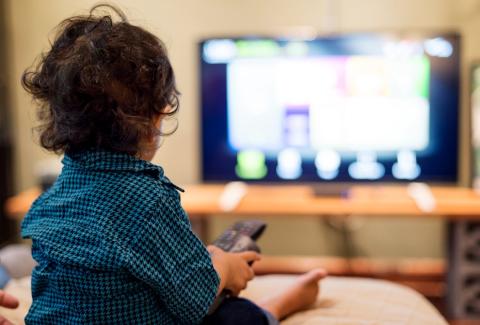Study analyses relationship between toddlers' use of screens and language skills
Toddlers' screen time has a negative correlation with their language skills, according to a study published in PLoS ONE. However, the use of educational content and screen time in the company of adults show a positive association with language skills. The study included nearly 1,900 children between one and four years old from 19 Latin American countries.

250205 pantallas Maria del Mar EN
María del Mar Sánchez Vera
Full Professor in the Department of Teaching and School Organization. Member of the Educational Technology Research Group.
The study presents information and data on the use of screens and interaction with adults, taking into account the development of language and motor skills, in a study carried out on 1,878 boys and girls between 12 and 48 months in 19 Latin American countries.
The theoretical foundation is interesting because it does not limit itself to collecting evidence in a single sense, but rather it relies on existing studies both for and against. It presents a critical analysis of the evidence, pointing out its contradictory nature and highlighting the importance of context and content in the use of technology.
The novelty of the study lies in the context in which it is developed, since many of the studies already carried out come from countries with different socioeconomic levels. This allows for exploring contextual factors such as socioeconomic level and cultural differences in the relationship between the use of screens and child development. It also proposes an interesting approach, because it does not limit itself to talking about ‘screens’ as an abstract or general entity, as happens in other studies, but rather tries to understand contextual aspects such as the interaction of families, the type of screen used and the content to which children are exposed. It does not limit itself to assessing only the time with the tool, but what content is addressed and whether there is support from adults. The results confirm other previous studies, such as that television is the device most used by minors, and mainly for entertainment. In addition, it proposes an interesting approach, by suggesting that educational content and support from families are important to find positive results in language development.
The limitations of the study are that the information on screen use and language skills is based on self-reports by families, which can introduce errors due to subjective perception or the desire to give socially acceptable answers. The answer to certain questions depends on approaches that are perhaps too subjective (for example, clearly differentiating when content is educational or entertainment). It is also important to highlight that several of the findings come from correlations, which imply association but do not necessarily show cause-and-effect. In addition, the effect sizes of some associations are low. Finally, although the sample is large, it is not representative of the entire population of the participating countries. Nor does it address how cultural and educational differences can influence the impact of screen use. Some aspects are indicated in a general way, but it would have been interesting to address them in more depth.
However, it is an interesting study as it attempts to address aspects that many studies of this type do not and that is the context and type of content that is consumed. It also assesses the difference between the use of passive media, such as television, compared to the use of other tools such as tablets, where interactivity can be more developed.
It raises interesting recommendations for decision-making, such as proposing digital education programs for families, paying attention to vulnerable contexts or the need to differentiate between types of content and devices, focusing not only on limiting screen time, but on how we should reflect on the interaction that takes place and the family's support actions.
Several of the issues indicated may be applicable to Spain, but there are socioeconomic and cultural differences that could influence the results.
Lucas G. Gago-Galvagno et al.
- Research article
- Peer reviewed
- Observational study
- People



